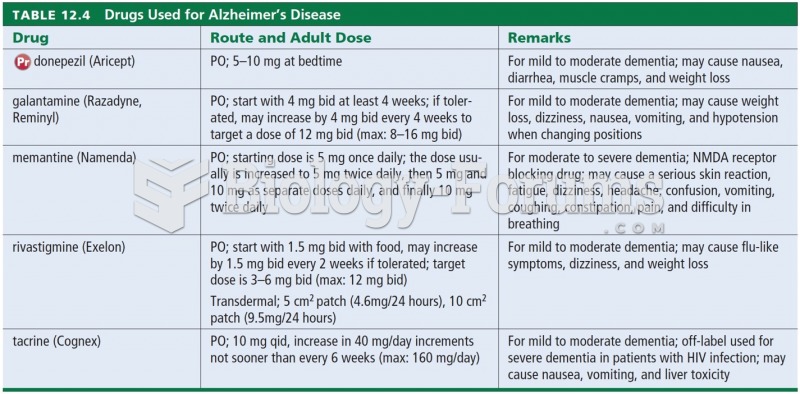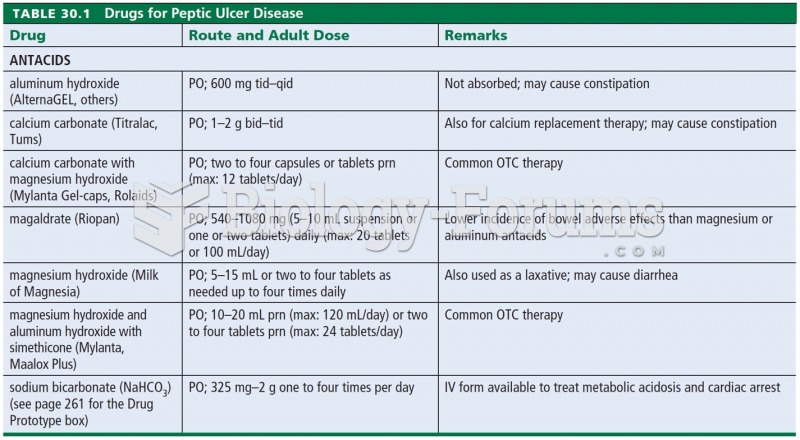|
|
|
Earwax has antimicrobial properties that reduce the viability of bacteria and fungus in the human ear.
The familiar sounds of your heart are made by the heart's valves as they open and close.
One way to reduce acid reflux is to lose two or three pounds. Most people lose weight in the belly area first when they increase exercise, meaning that heartburn can be reduced quickly by this method.
All patients with hyperparathyroidism will develop osteoporosis. The parathyroid glands maintain blood calcium within the normal range. All patients with this disease will continue to lose calcium from their bones every day, and there is no way to prevent the development of osteoporosis as a result.
Nearly 31 million adults in America have a total cholesterol level that is more than 240 mg per dL.







